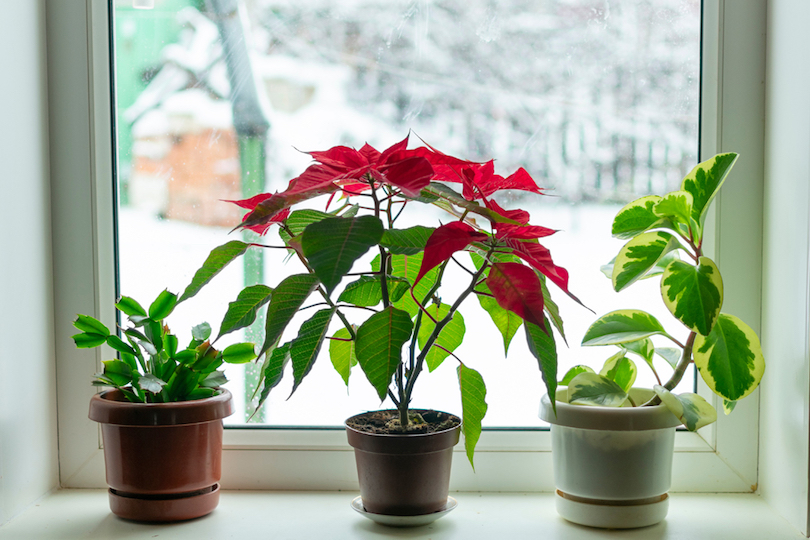Winterizing House Plants
4.14.2021

How To Keep Houseplants Healthy Over Winter
Winter is here and we are not the only ones to notice the shorter daylight hours and sharply colder air. Plants notice these changes too and begin transitioning to a more dormant state. Houseplants, in particular, can become stressed with the shifting environmental conditions. The change of seasons will require houseplant owners to alter how they care for their plants, giving special attention to ensure they stay healthy during winter. Utilize the following tips to properly over-winter your houseplants.
Scale Back Watering
Since the plants are going into a dormant state, they grow less. Because of this change, they generally require less watering than in the warmer months of the year. Reduce the watering frequency, but when you do water the plants, do it thoroughly until water starts to drain from the bottom of the pot.
You can use one simple method to see if you will need to water the plants by placing your finger into the soil to check the moisture level. If the soil is dry, it’s time to water it. But if it’s damp to the touch, you don’t need to. Some exceptions to this method include ferns, cacti, and succulents. Ferns require evenly moist soil and need to be watered more frequently. On the other hand, cacti and succulents should only be watered when the soil is entirely dry. Overall, the majority of houseplants should be watered when the soil surface is dry.
Stop Fertilization
With the reduction in growth, houseplants do not need to be fertilized during winter. Fertilization can resume when the plants emerge out of dormancy in spring and start actively growing again.
Ensure Sunlight Exposure
Shorter hours of sunlight and longer periods of darkness can physically stress plants, causing stunted leaves, dropping of leaves, and dull or yellowing coloring, to name a few. Place your houseplants in a well-lit room or closer to a window. Be careful not to have the leaves touching the cold glass. For larger plants, rotate them every week or so to ensure the leaves get even sunlight.
Watch The Temperature
A majority of houseplants prefer temperatures of 55 to 70 degrees Fahrenheit. Check to see if the plants are near any cold drafts, radiators, and hot air vents. The extreme temperature fluctuations caused by these sources can place a lot of undue stress on the plants.
Adjust Humidity Levels
With the thermostat cranked up, homes during winter commonly have a relative humidity level of around 10 to 20 percent. However, a majority of houseplants favor relative humidity that is closer to 40 to 50 percent. You can use a couple of tricks to help achieve more tolerable humidity levels for your plants. One way to boost the humidity is to group the plants closer together. By doing this, the proximity of evaporating water from the potting soil and plant leaves work together to raise humidity. Another option is using humidifiers to increase the relative humidity in your living space.
By being mindful of these plant-care approaches, you’ll be able to help your houseplants stay in good health while indoors throughout the frigid winter. For more green-thumb tips and tricks on everything horticulture-related, follow Natural Fertilizer on Facebook, Twitter, and Instagram!